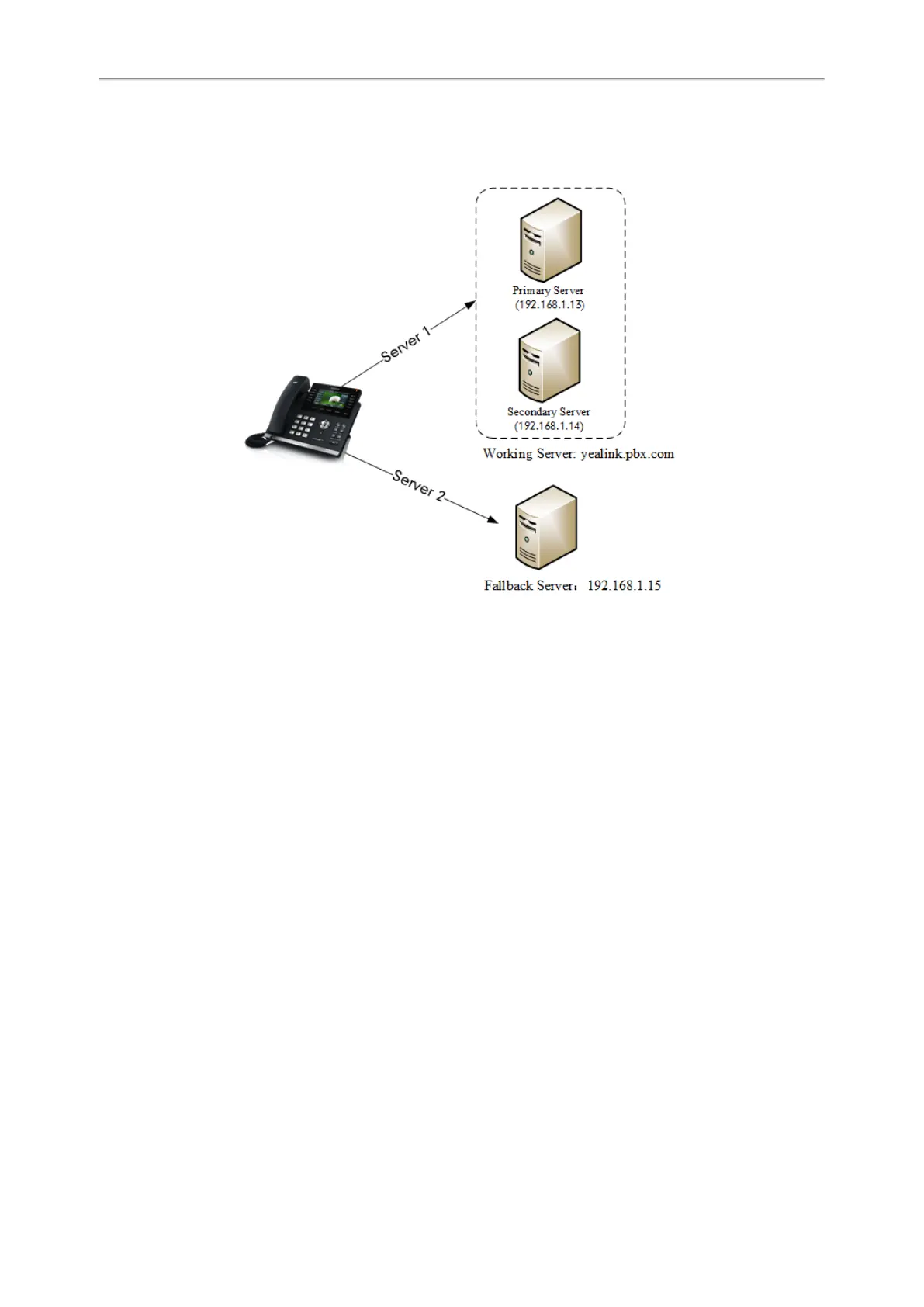Administrator’s Guide for SIP-T2 Series/T4 Series/T5 Series/CP920 IP Phones
206
To assist in explaining the redundancy behavior, an illustrative example of how an IP phone may be configured is
shown as below. In the example, server redundancy for fallback and failover purposes is deployed. Two separate serv-
ers (a working server and a fallback server) are configured for per line registration.
l Working Server: Server 1 is configured with the domain name of the working server. For example: yealink.pbx.com.
DNS mechanism is used such that the working server is resolved to multiple servers with different IP addresses for
failover purpose. The working server is deployed in redundant pairs, designated as primary and secondary servers.
The primary server (for example, 192.168.1.13) has the highest priority server in a cluster of servers resolved by the
DNS server. The secondary server (for example, 192.168.1.14) backs up a primary server when the primary server fails
and offers the same functionality as the primary server.
l Fallback Server: Server 2 is configured with the IP address of the fallback server. For example, 192.168.1.15. A fall-
back server offers less functionality than the working server.
Yealink IP phones support Failover and Fallback server redundancy types. In some cases, you can deploy a com-
bination of the two server redundancy types. For more information on server redundancy, refer to Server Redundancy
on Yealink IP Phones.
Topics
Behaviors When Working Server Connection Fails
Registration Method of the Failover/Fallback Mode
Fallback Server Redundancy Configuration
Failover Server Redundancy Configuration
Behaviors When Working Server Connection Fails
For Outgoing Call
When you initiate a call, the IP phone will go through the following steps to connect the call:

